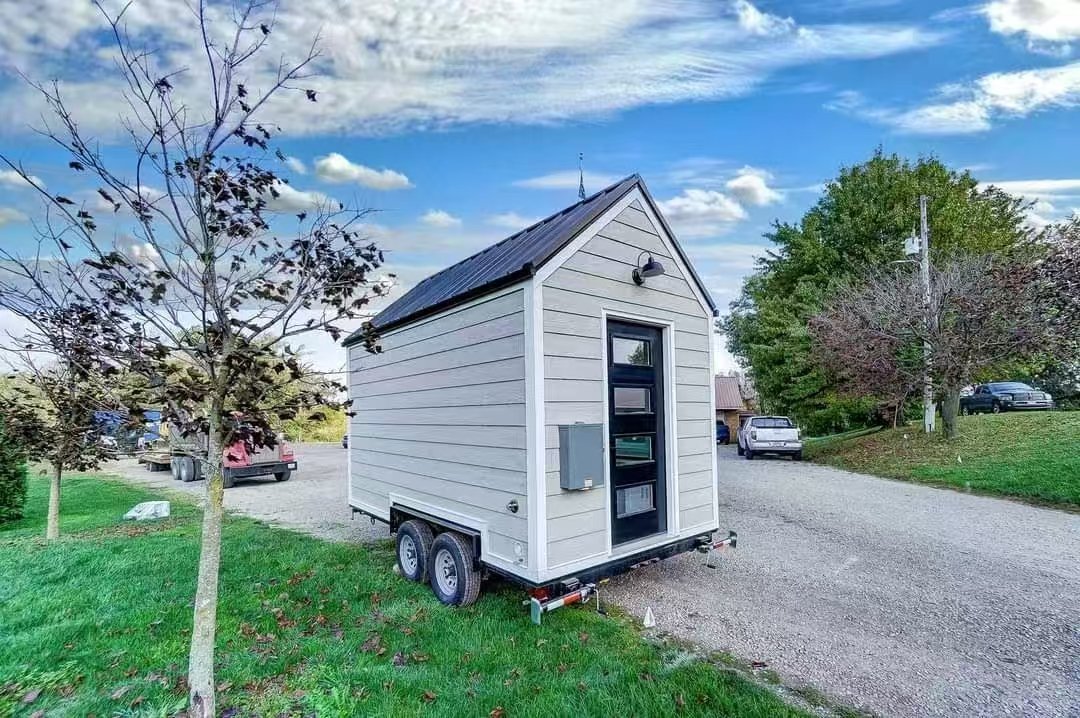A Nation in Crisis and Rising Costs
The reality, of course, is in a nation where construction costs are ridiculous and banks take forever to get a home built, it’s not long before you realize your dream home is out of reach. And when you see the costs of your dream home skyrocket into the stratosphere, you don’t know what to do. We’re not just talking about cost. I remember as a builder, trying to deal with the complexity of the modern builds, you feel trapped like it’s all slipping through your fingers. . .it’s overwhelming. Sound familiar?
But what if there was a solution that solved these problems?
What if there was an answer that changed the way you looked at building homes?
Enter: Container homes.

The Emergence of Container Homes
Container homes have become a cultural phenomenon in residential housing, fueled by the designs of top architects, the ambitions of builders, and the tastes of homeowners. As the largest manufacturer of modular metal buildings in the United States today, we have noticed the growing popularity of these alternative housing structures in various parts of the developing world. In this blog post, we will answer the question: Are container homes cheaper to build than traditional homes?
Container Homes vs. Traditional Construction
When it comes to the costs of comparing container homes to traditional houses, there are several important factors to consider. On the face of it, container homes can be built significantly cheaper. The cost of an initial shipping container shell is incredibly cheaper than the cost of conventional building materials. On average, a standard 20-foot shipping container can range anywhere from $2,000 to $6,000 or more depending on the size. In contrast, a typical traditional home in the United States has a median price tag of anywhere from $240,000 to over $710,000.
The average total cost to build a container home varies widely, typically falling between $25,000 and $250,000. This equates to about $150 to $350 per square foot, which can be half the cost of traditional homes, often exceeding $400 per square foot. For those seeking prefabricated options, container homes can range from $120 to $300 per square foot.
However, while initial costs appear low, it's essential to recognize that substantial modifications are often necessary to render these containers livable. These modifications include insulation, plumbing, electrical systems, and the addition of windows and doors. As a result, total costs can climb significantly, sometimes nearing the expenses associated with traditional homes.
The factors influencing the final price of building a container home include:
- Size and Layout– This design factor can either lower or increase the total cost of your build. Large designs or complex layouts require more containers and more modifications, which equals more expense.
- Location– The cost of land can dramatically affect your budget, and the need for other expenses like permits and site work can add even more expenses.
- Customization– The more you customize your container home, the more expensive it will be.
- Labor Costs
- – Do you have the skills necessary to modify a container, or will you need a professional to help you?
- It doesn’t need to be said that labor costs can have greatly affect your budget.
The Long-Term Big Picture: Not Just About What it Costs to Start
While container homes have some initial cost advantages and can be faster to build, people are also going to have to think about what will happen with this house in the long-term.
Some of things they’re going to have to ponder include:
- Resale Value: As a general rule, traditional homes generally appreciate in value over time and have a solid re-sale marketplace. Container homes, well, there can be a lot of skepticism from new buyers.
- Maintenance: You’re going to have to take care of a container home. You’re going to have issues with rust, insulation and more. You’ll have to manage these “quirks” to make your home last a long time.
- Building Codes: Local building codes and zoning laws can dictate where container homes can be placed, potentially incurring additional costs for compliance.
Keep The Learning Rolling: The Big Money
Now that you have a foundation, let’s start jumping into the huge cost-saving aspects of building a container home, and we will then cover some of the finer points that make these structures cool and desirable.
What Are the Big Saving Graces?
The first and foremost savings touch on them all, no matter the system you choose to deploy. Here are the major areas of savings for container homes: the materials are cheaper, the labor required to build it is less, and it is easier to build. The houses typically do not require as much foundation, which saves you a bunch of money on-site work.
How do used containers compare to new ones in terms of price?
Here’s the math…
Used containers are significantly cheaper than new containers. Prices for used containers range between $1,500 and $3,500 depending on the quality of the container. But, beware. When you buy the lower-priced containers, you might be buying a bunch of problems you don’t know about.
Overall, used is great, but it could cost you in the long run if you don’t know what you’re getting.
What Are The Typical Maintenance Costs For These Types Of Homes?
Maintenance costs on shipping container homes vary, but you must at least plan on a regular schedule for doing things like checking the steel for rust, managing your plumbing and electrical systems, upkeep of your insulation and more. You may also want to set up a value of $1,000-2,000 per year for general maintenance.
Don’t be a complete slouch. Invest in your house, and it will last you a lot longer and make you happy in the long-run.
How Do Utility Costs Compare for a Container Home Versus a Traditional Home?
Your utility costs in a shipping container home can be much lower than a traditional home or perhaps the same, depending on how well it is built. If you build your container home to be very “green” and install solar or wind power, you might not have any monthly utility bills at all. So, it makes a shipping container not only a great value for you to build but also a great value for you to live in as well.
Why not? You might not have any utility bills!
So if you’re considering building a container home, always remember that you can probably build it cheaper than a traditional house. Then again, you might not. It depends what you decide to do to make it livable, like the size, customization, location, etc. This is an alternative living solution. However, I want you to be realistic about what your total costs will be.
When you come to play with these numbers, you’re going to feel awesome because you’ll know the numbers that back it up. Remember, when you have numbers like this and analyze the costs, you can make a decision with confidence. Whether you’re looking for a little less expensive solution, a change or just a place to live a cool, old, hippie lifestyle, a container home would fit that very nicely. Don’t you think? It might just be a little cheaper than the photos you’ve seen on social media, which makes you feel good.




